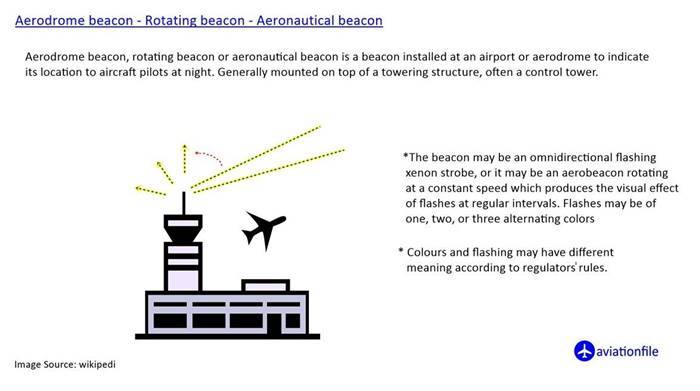What is an Aerodrome Beacon?
An aerodrome beacon is a light beacon installed at an airport or airfield to provide visual guidance to pilots approaching the airport. It typically consists of a rotating or flashing light that is visible from a distance, and is usually located near the airport’s control tower or on the airport’s perimeter. It may be operated by the airport authority or a separate organization.
The beacon may also be accompanied by other navigation aids such as a VHF omnidirectional range (VOR) transmitter or a non-directional beacon (NDB) that provides radio navigation information to pilots. These navigation aids work in conjunction with the aerodrome beacon to provide pilots with a comprehensive set of information for approaching and landing at an airport.
Guiding Pilots in Low Visibility
Imagine flying at night or in foggy weather. Spotting an airport can be tricky. Aerodrome beacons come to the rescue! Their powerful, flashing lights help pilots easily identify the airport’s location from a distance, ensuring a safe approach.
Color Codes for Different Facilities
The color of the flashing light actually tells pilots what kind of facility they’re approaching:
- Flashing white and green: Civilian land airport (most common)
- Flashing white and yellow: Water airport (for seaplanes)
- Flashing green (or white and green): Heliport (for helicopters) – Green alone is also used for some heliports.
- Two white flashes followed by green: Military airport

Aerodrome Beacon: Guiding Pilots Through the Night Sky – Further Reading
- Federal Aviation Administration (FAA): https://www.faa.gov/regulations_policies/advisory_circulars/index.cfm/go/document.information/documentID/22569
- International Civil Aviation Organization (ICAO): https://skylibrarys.files.wordpress.com/2016/07/annex-14-aerodromes.pdf
- SKYbrary Aviation Safety: https://skybrary.aero/
- Pilot Institute: https://generalaviationnews.com/2021/03/13/kbct-first-airport-to-install-new-faa-approved-led-rotating-beacon/


